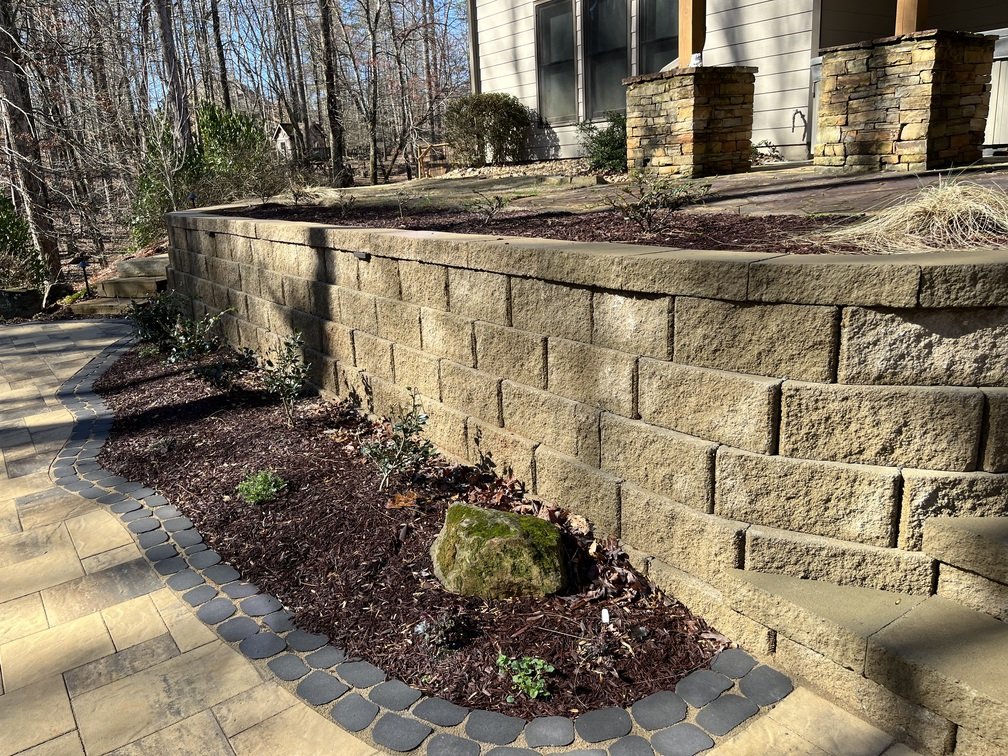
Retaining Walls in Suwanee
Retaining walls is vital in enhancing outdoor spaces, offering practical and aesthetic benefits. These structures are crucial for preventing soil erosion and managing water runoff, particularly on properties with sloped terrains. By stabilizing the soil, retaining walls protect gardens, driveways, and other outdoor features from potential damage caused by shifting soil and excess water.
Additionally, retaining walls significantly improve the visual appeal of a property. Constructed from natural stone, brick, or concrete, they can complement the existing architecture and landscape design, creating a cohesive, pleasing look that enhances the property.
Installation includes meticulous planning and skilled execution. Professionals manage every step, from the initial design and site assessment to construction and finishing touches. This comprehensive approach guarantees that the retaining wall is durable and visually pleasing, offering long-lasting benefits. Exploring the options available for retaining walls can transform and enhance the functionality and beauty of outdoor spaces, making them more enjoyable and valuable. Contact the team today to start a project and transform the landscape with expertly crafted retaining walls.
Factors Influencing Retaining Wall Design
Soil Characteristics: The type of soil present on the site significantly impacts the design of a retaining wall. Soil properties, such as texture, density, and cohesion, determine how much load the wall must support and how the soil will interact with the wall. Recognizing these characteristics helps professionals design a stable and effective retaining wall that can handle the soil's specific needs.
Drainage Considerations: Proper drainage contributes to a retaining wall's longevity and stability. Water build-up behind the wall can create pressure that compromises its structural integrity. Incorporating efficient drainage solutions, such as perforated pipes and gravel backfill, helps manage water flow and prevents damage from water accumulation, ensuring the wall remains functional and durable over time.
Environmental Factors: Environmental conditions, including climate, weather patterns, and vegetation, influence the design of a retaining wall. To avoid potential damage, the design must account for factors such as freeze-thaw cycles, rainfall intensity, and root growth. Adapting the wall to these environmental conditions helps maintain its structural integrity and aesthetic appeal.
Structural Requirements: The structural design is dictated by the retaining wall's height and length, along with the materials used. Professional engineering determines the wall's dimensions and reinforcement needs so it can support the soil load and withstand external forces, providing a safe and reliable structure.
Our Reviews

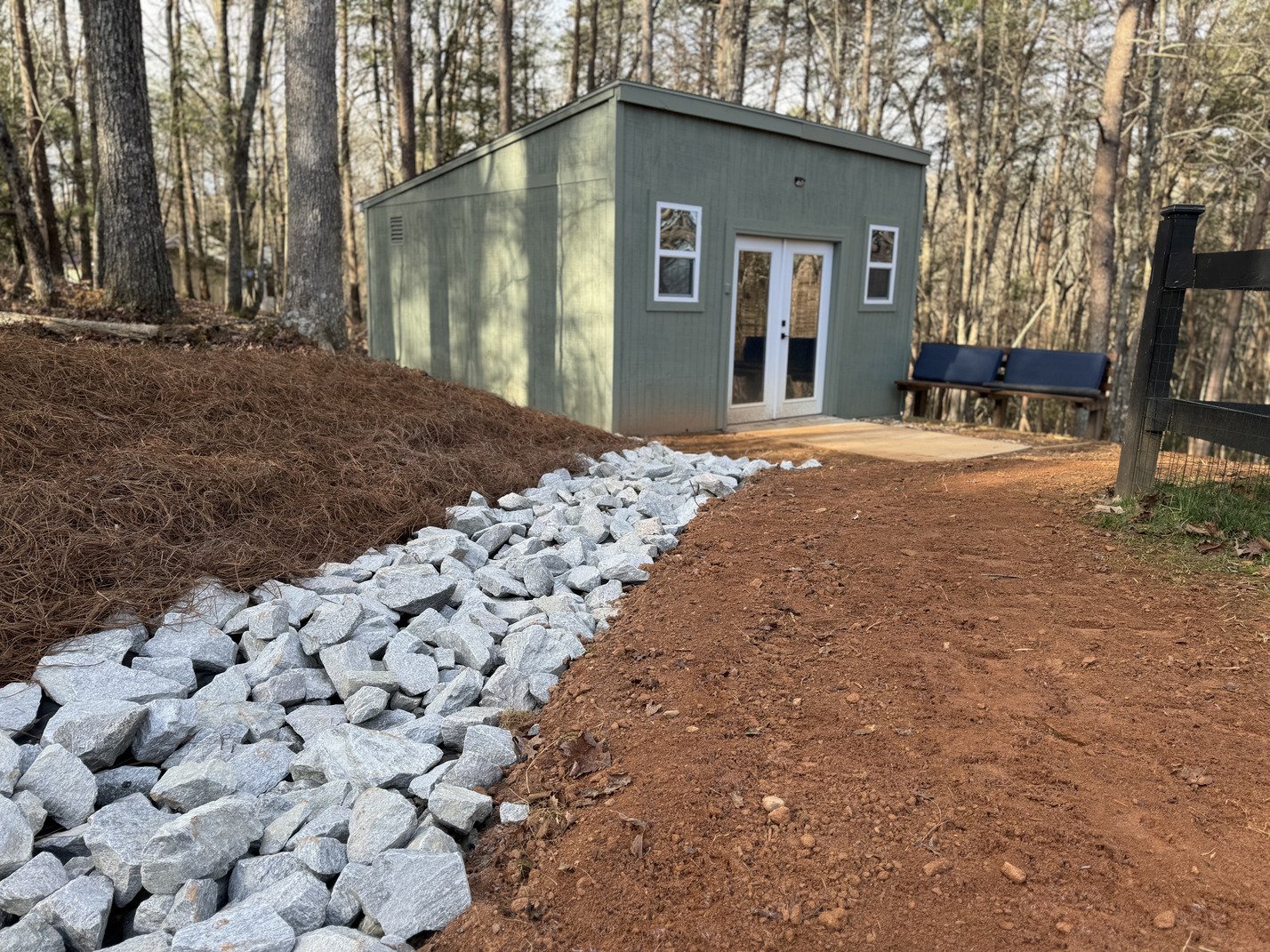
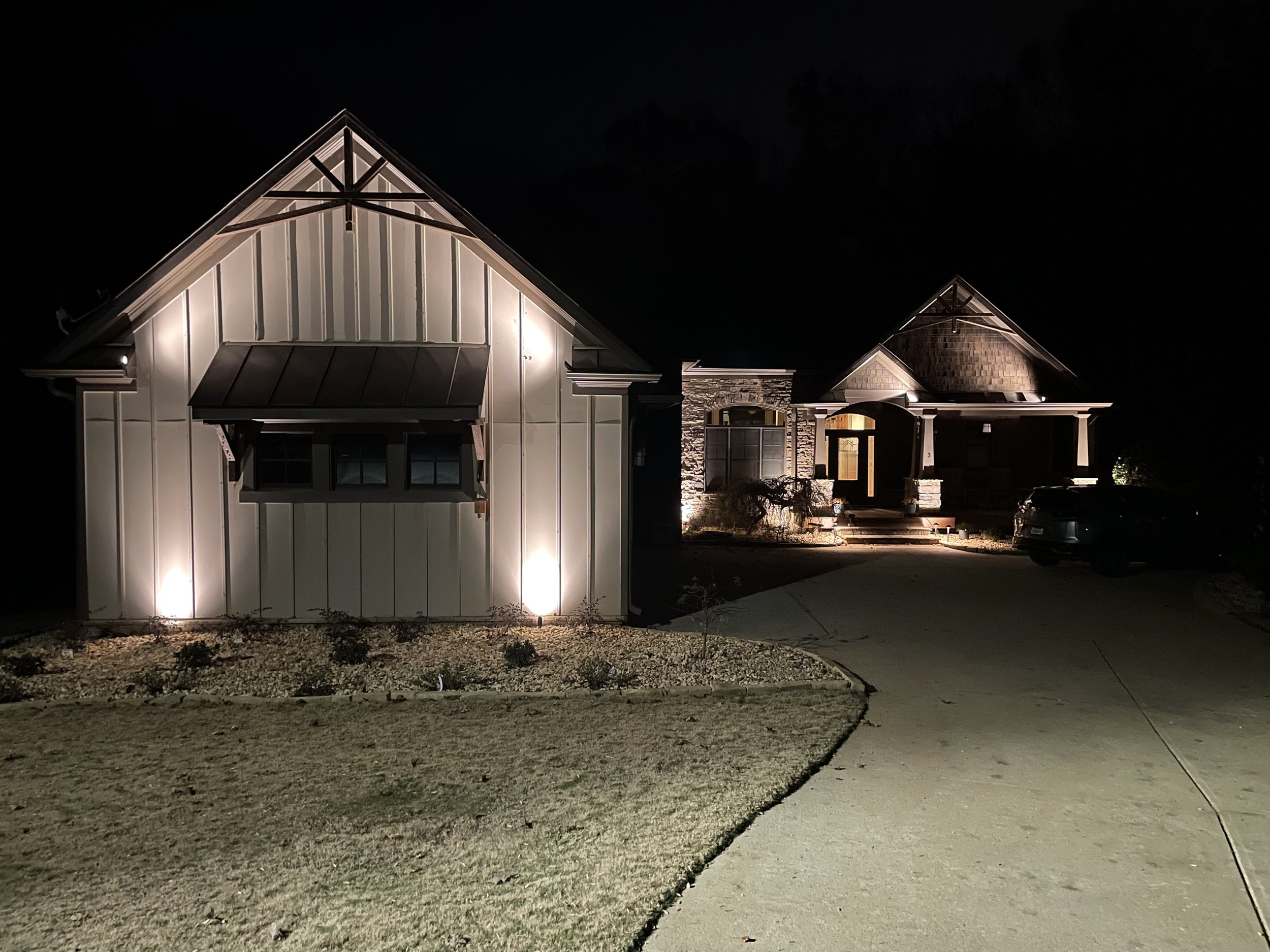
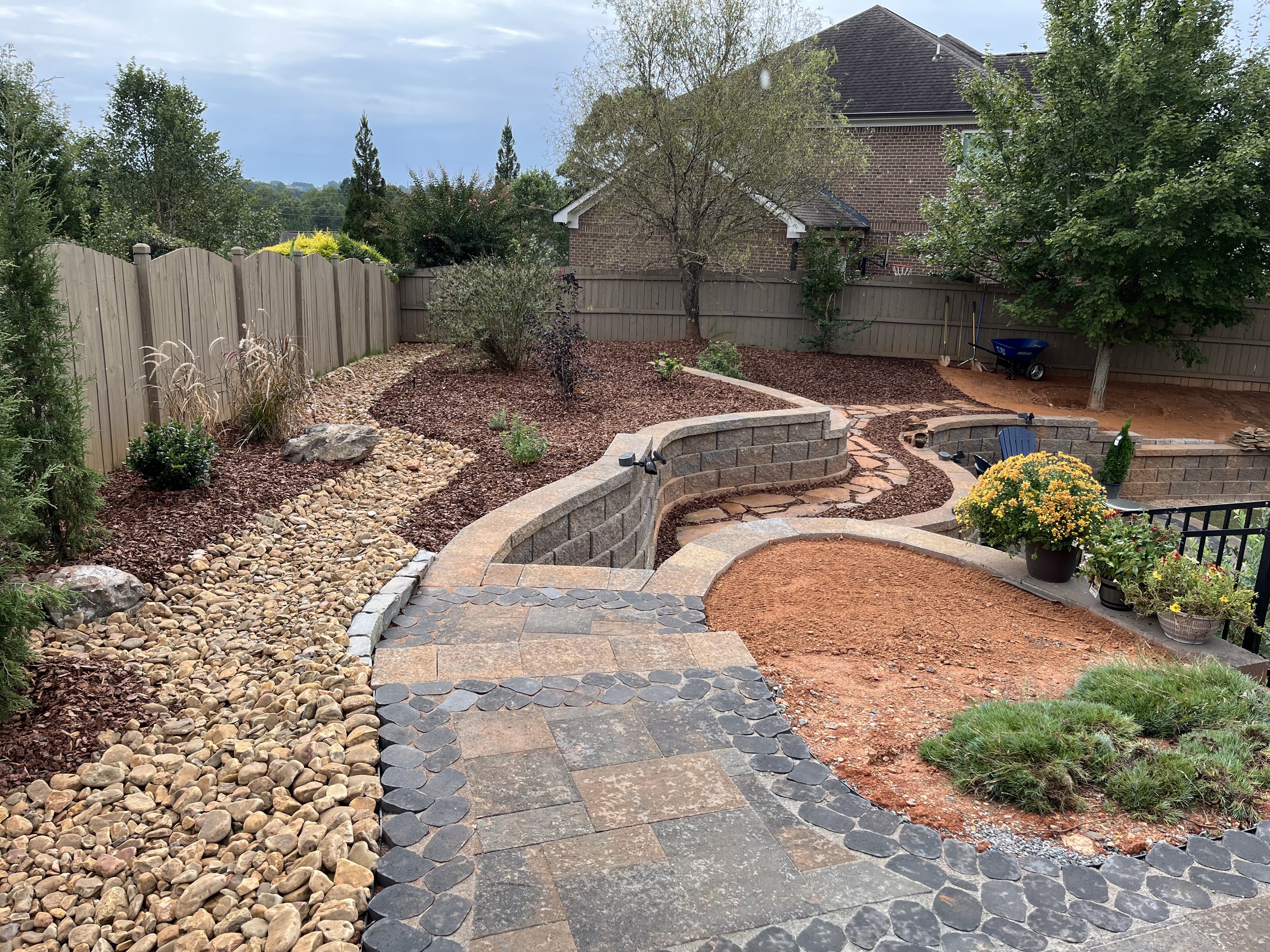
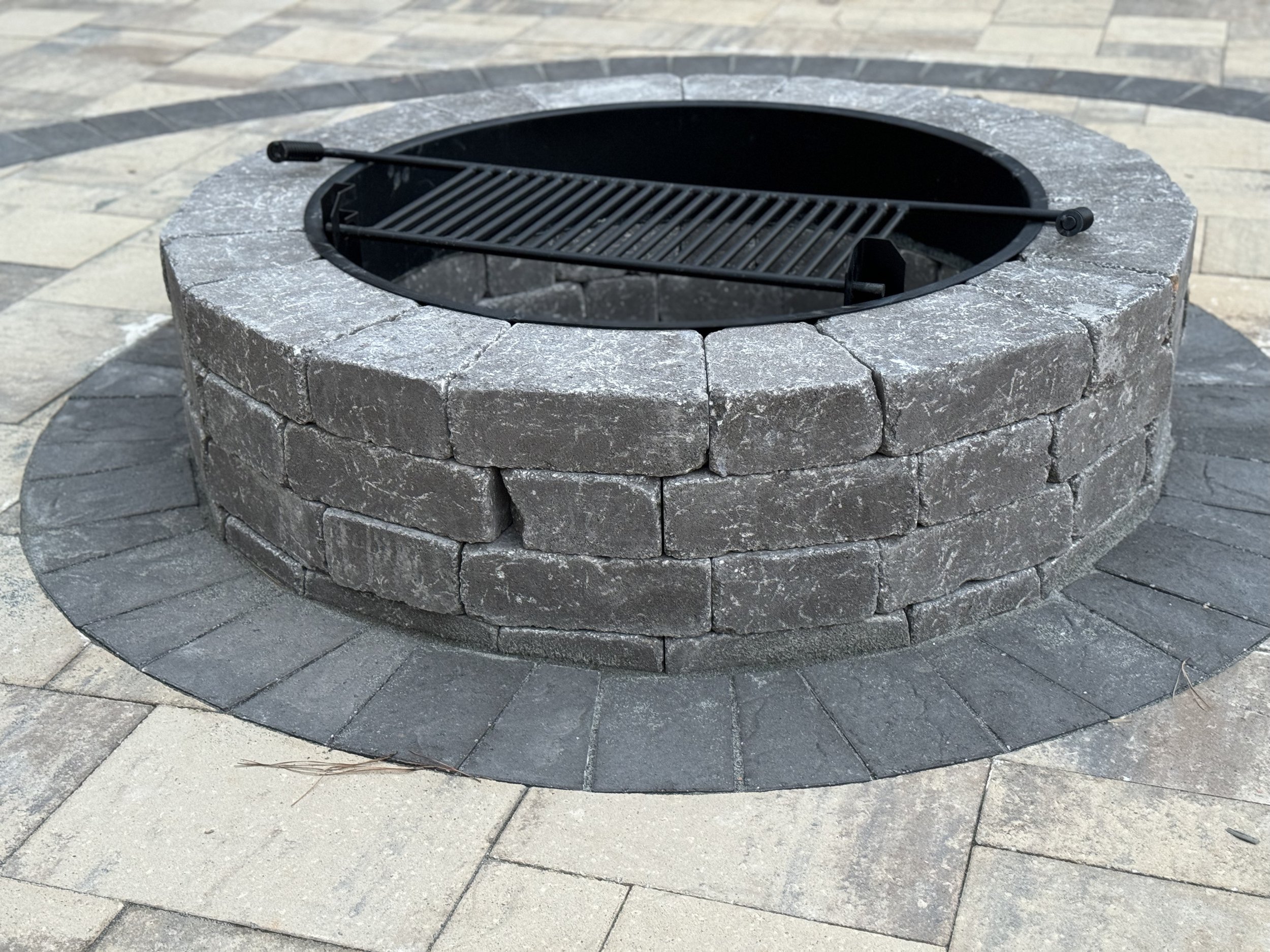
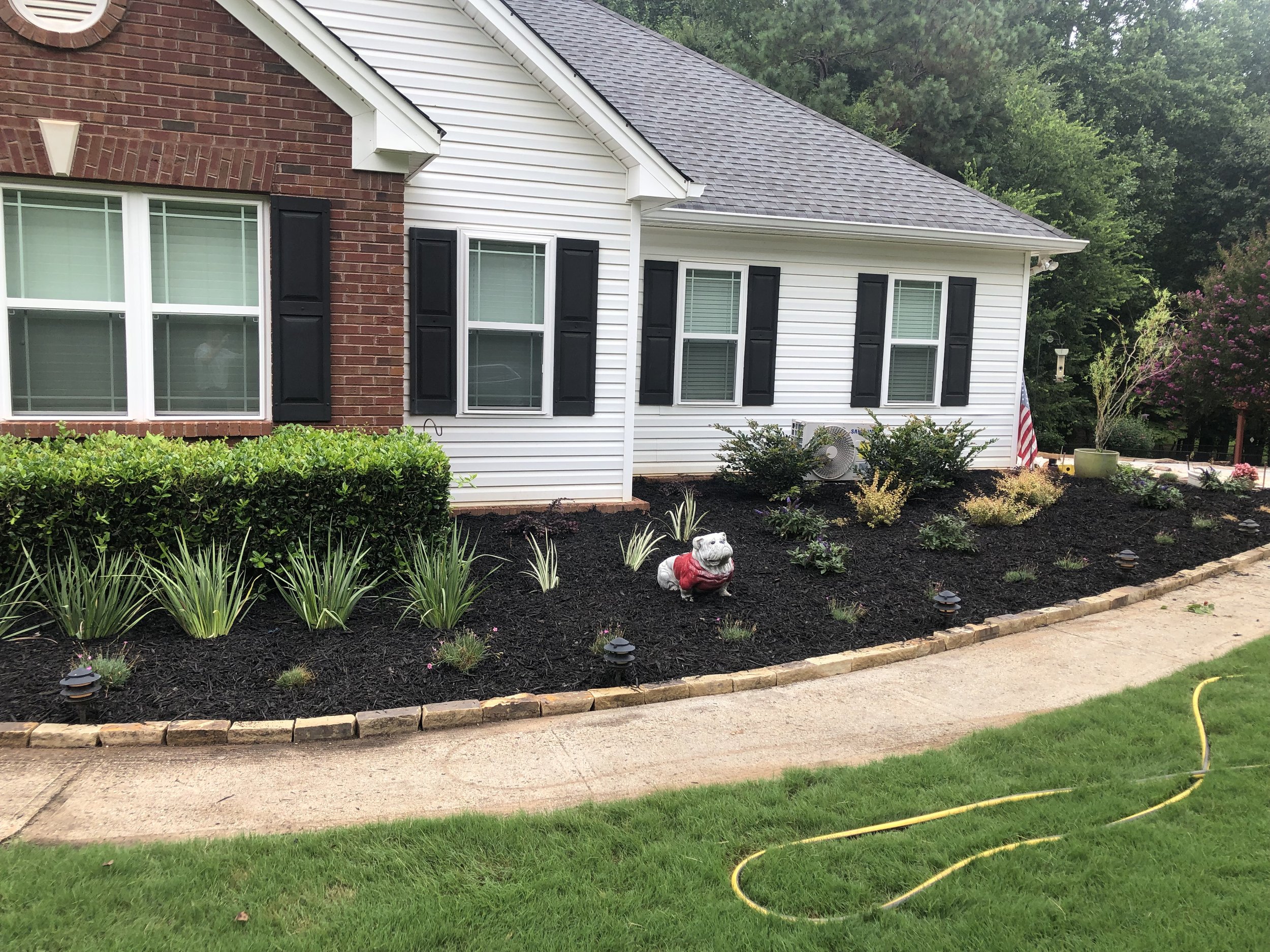
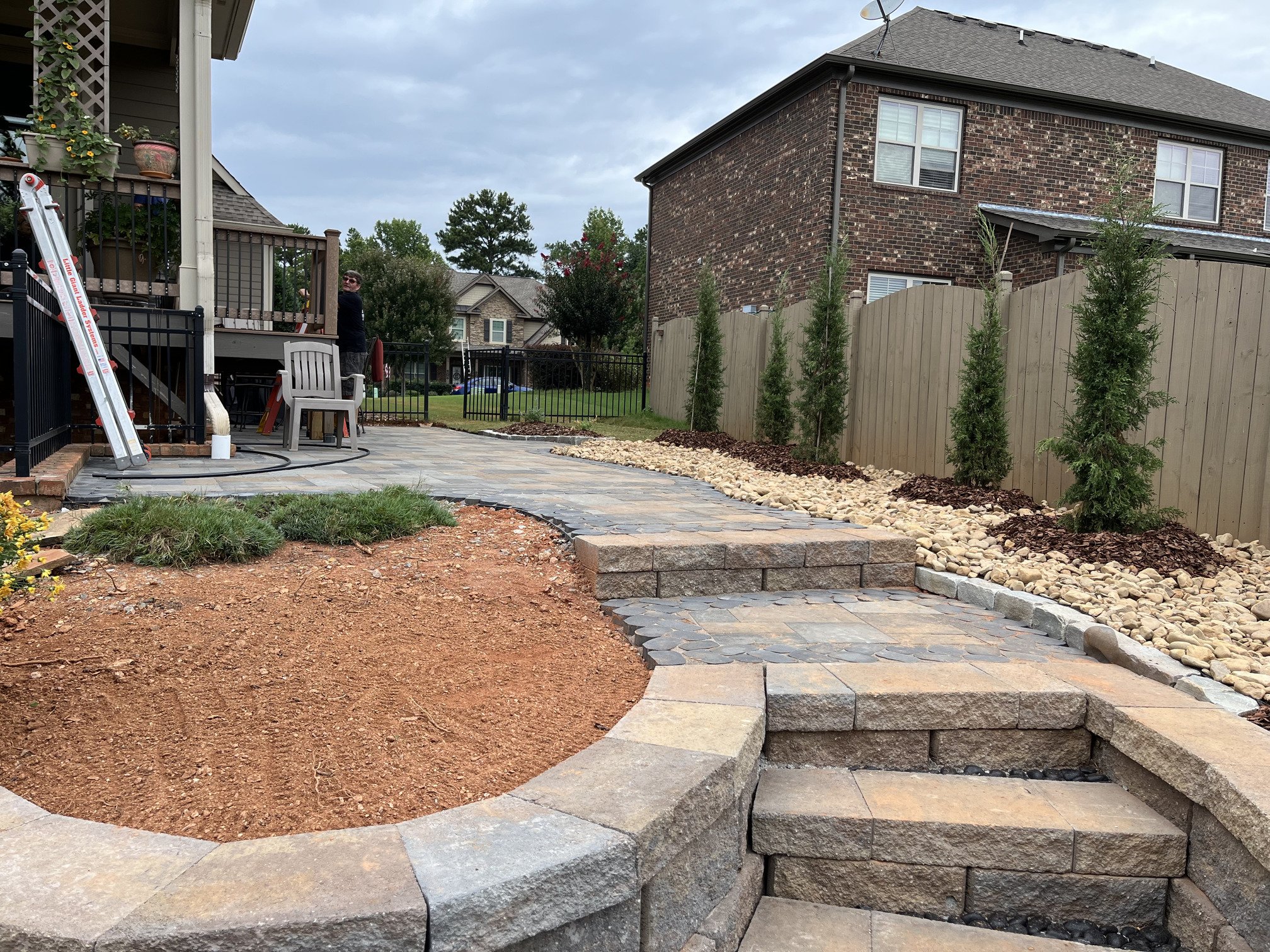
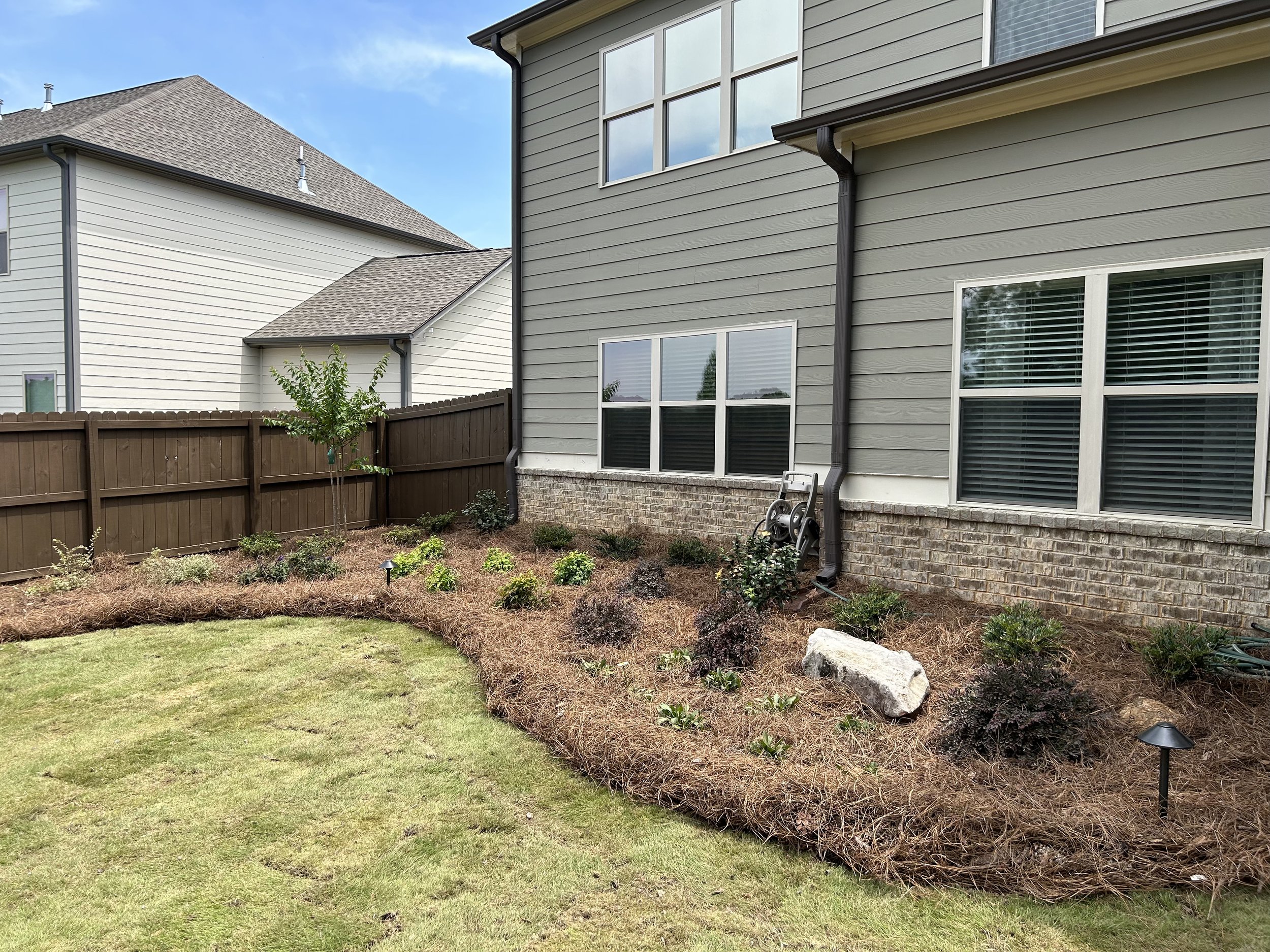
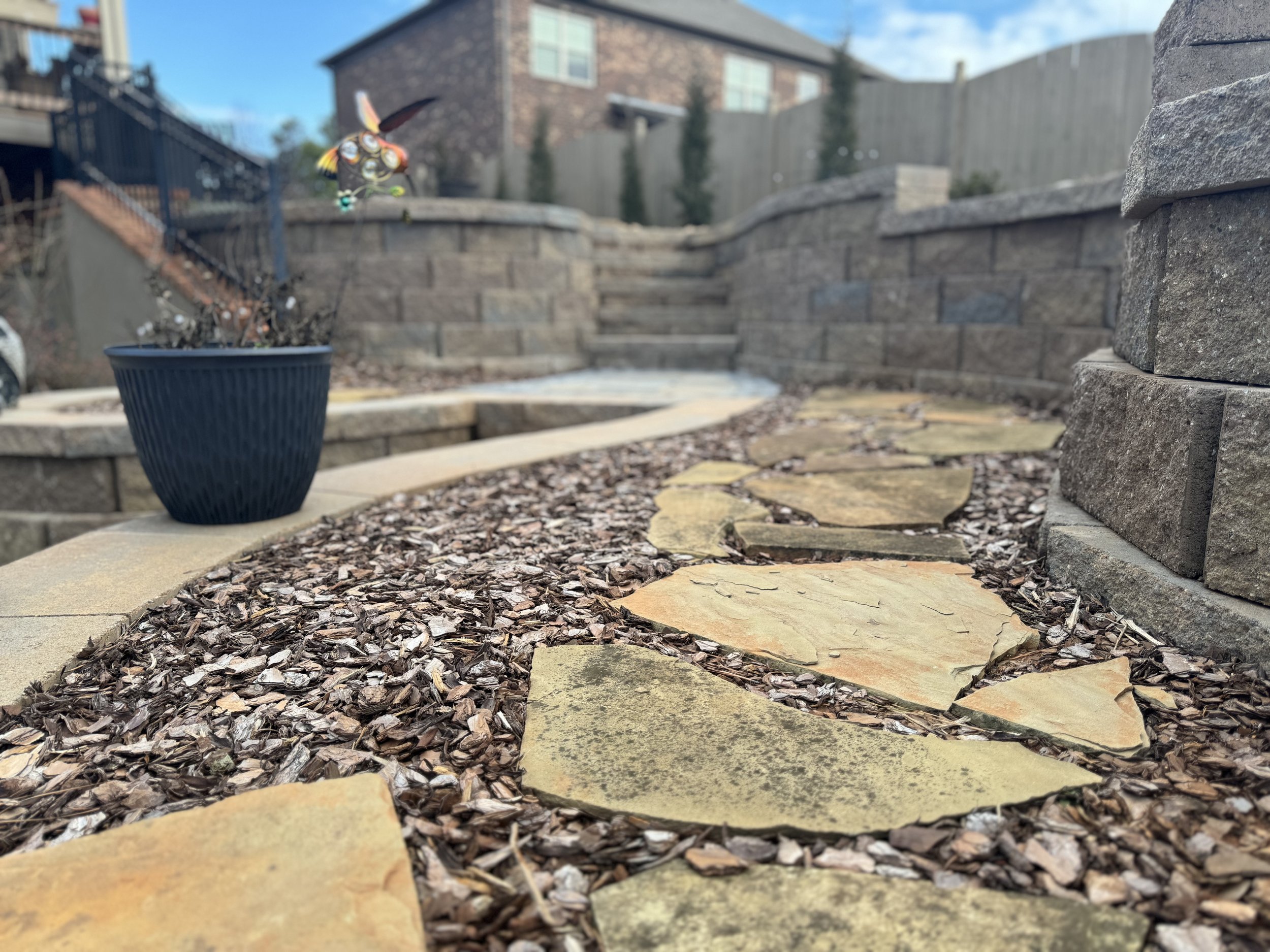

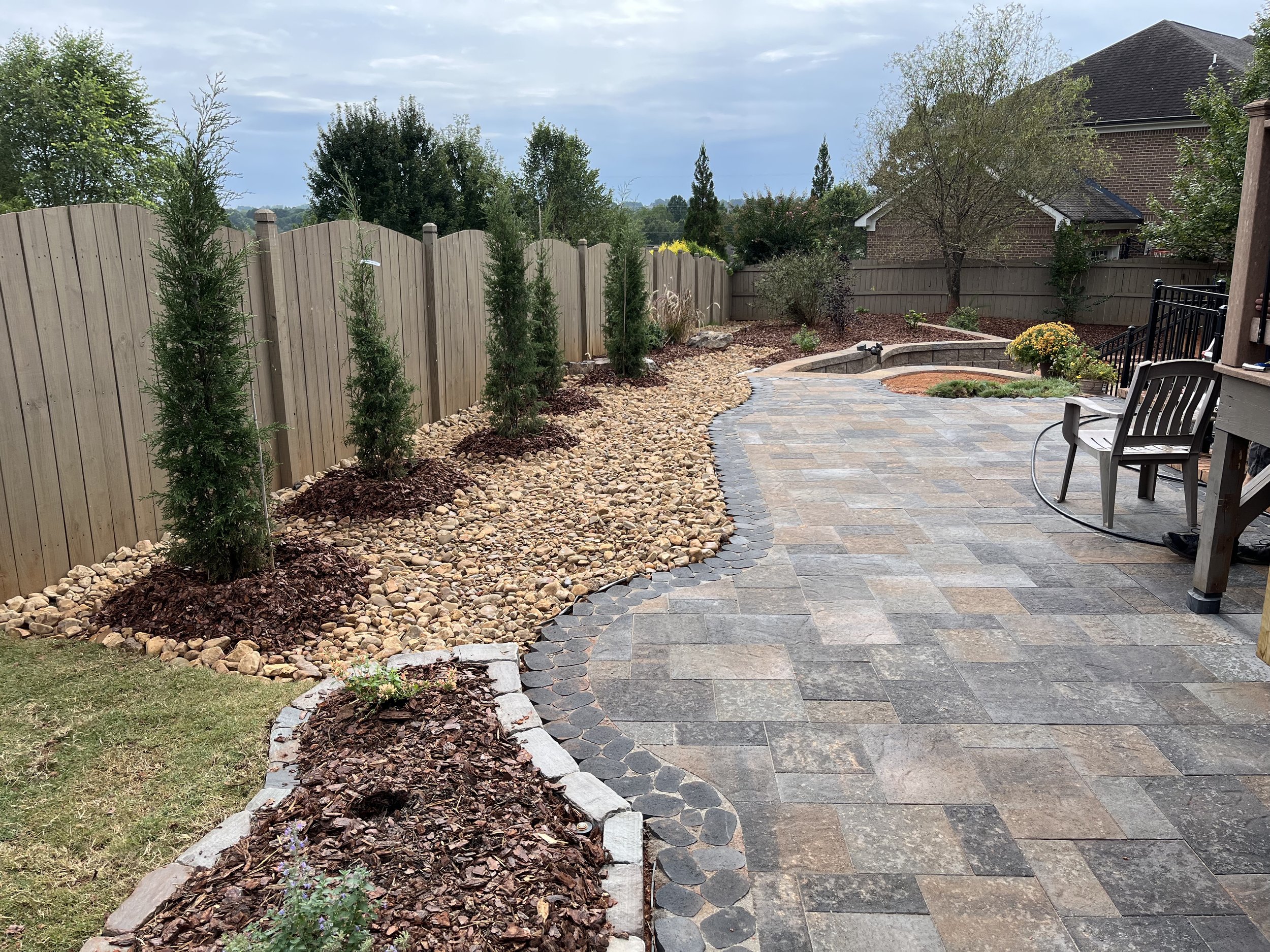
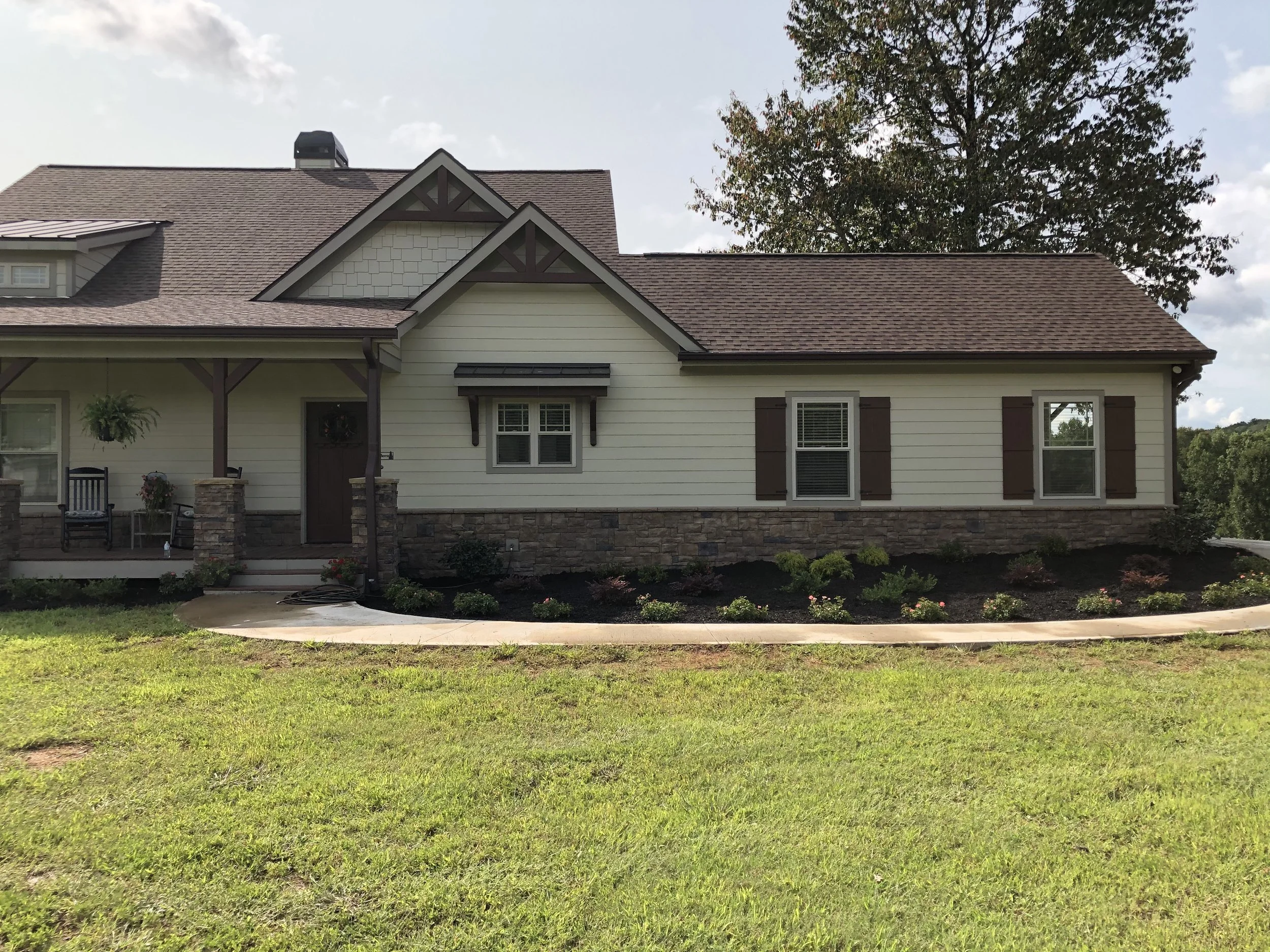
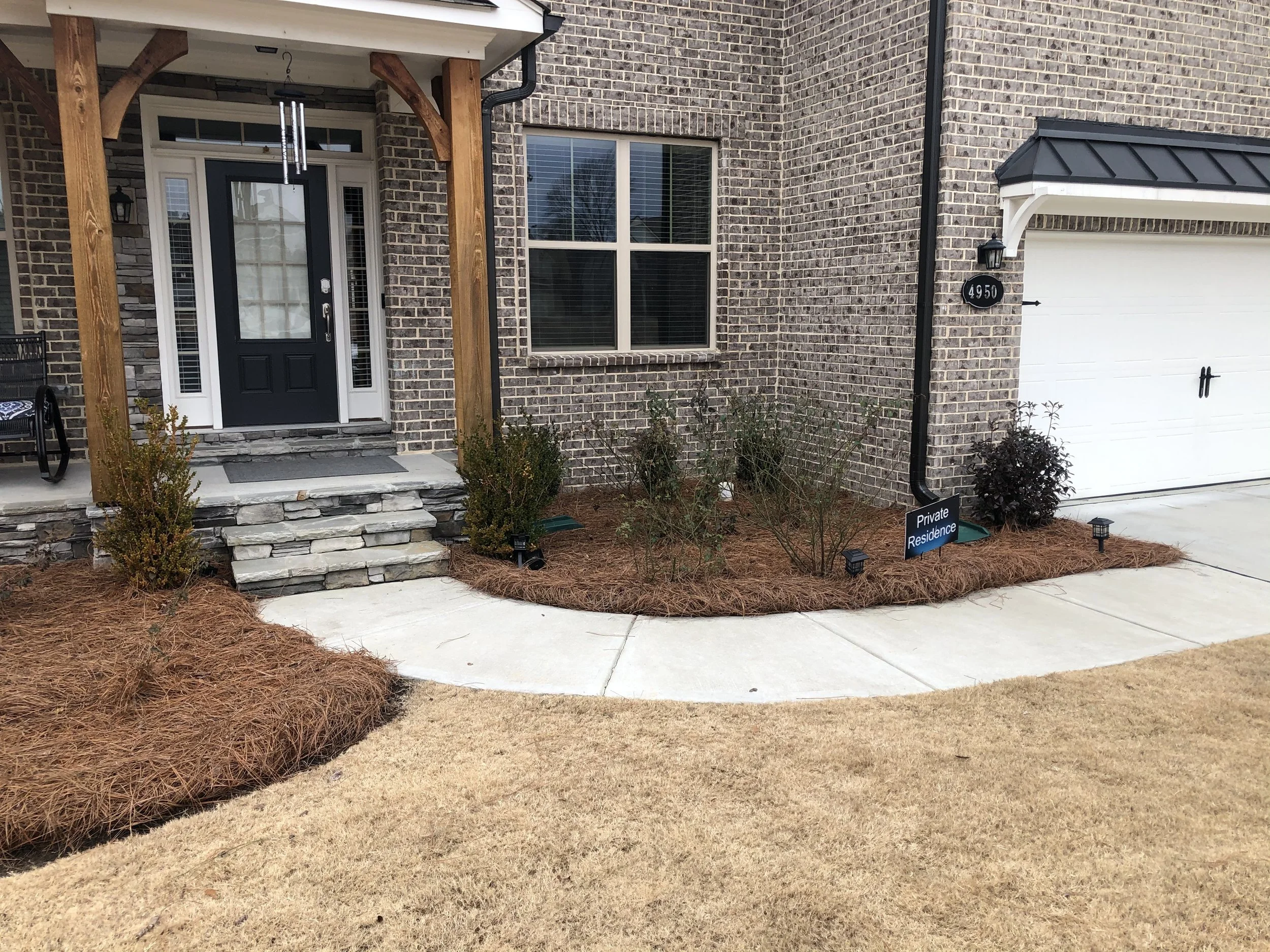
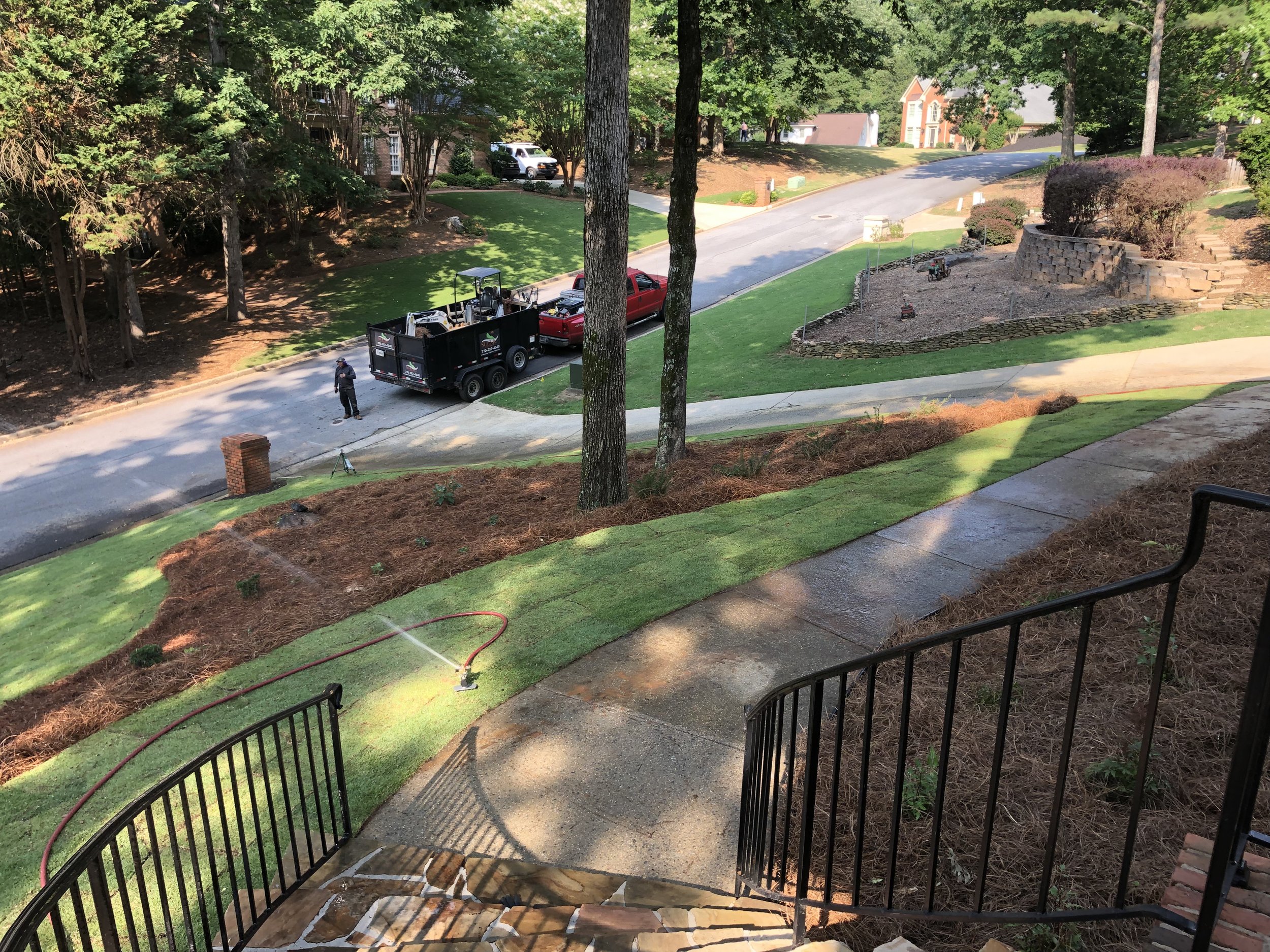
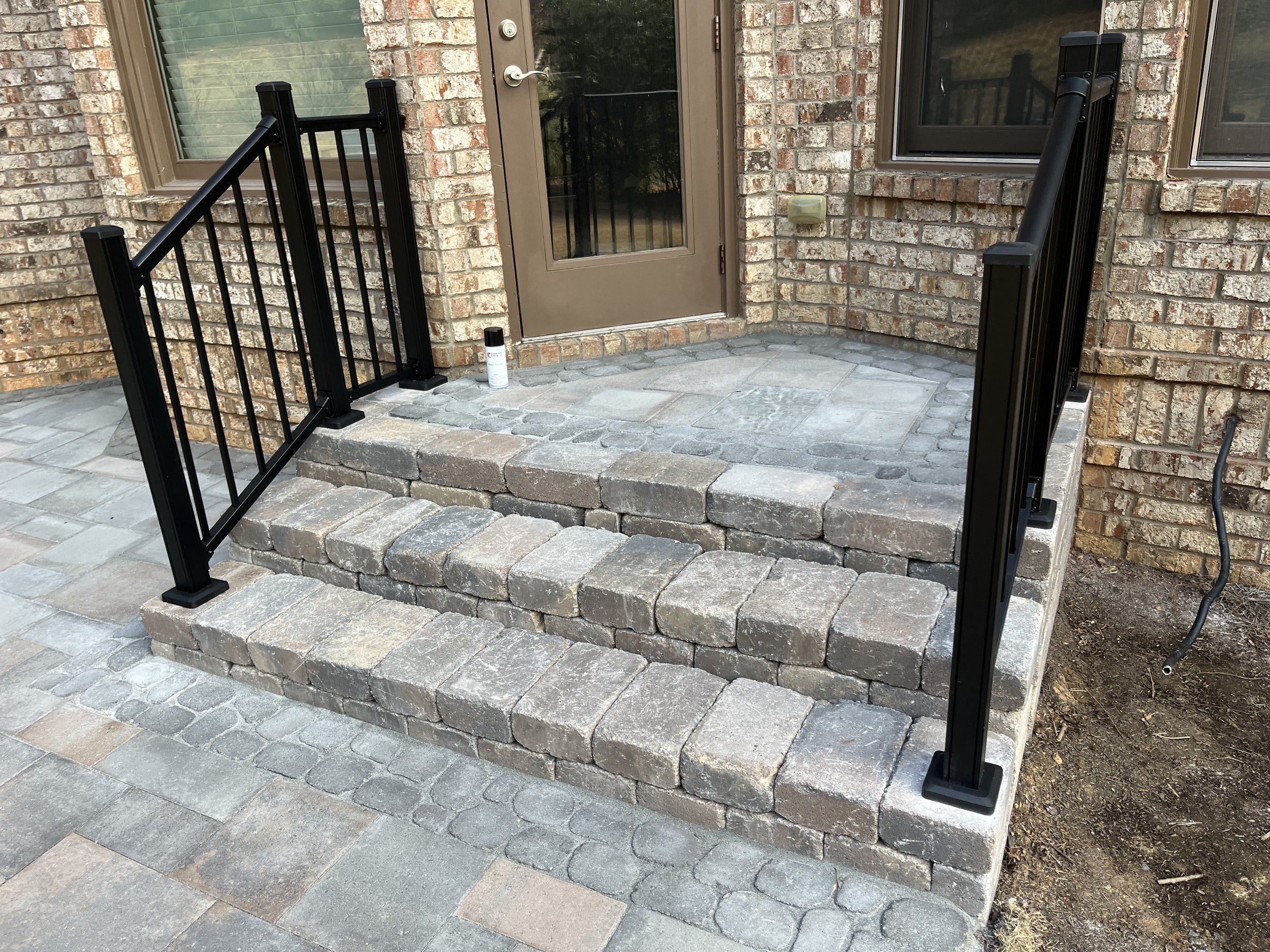
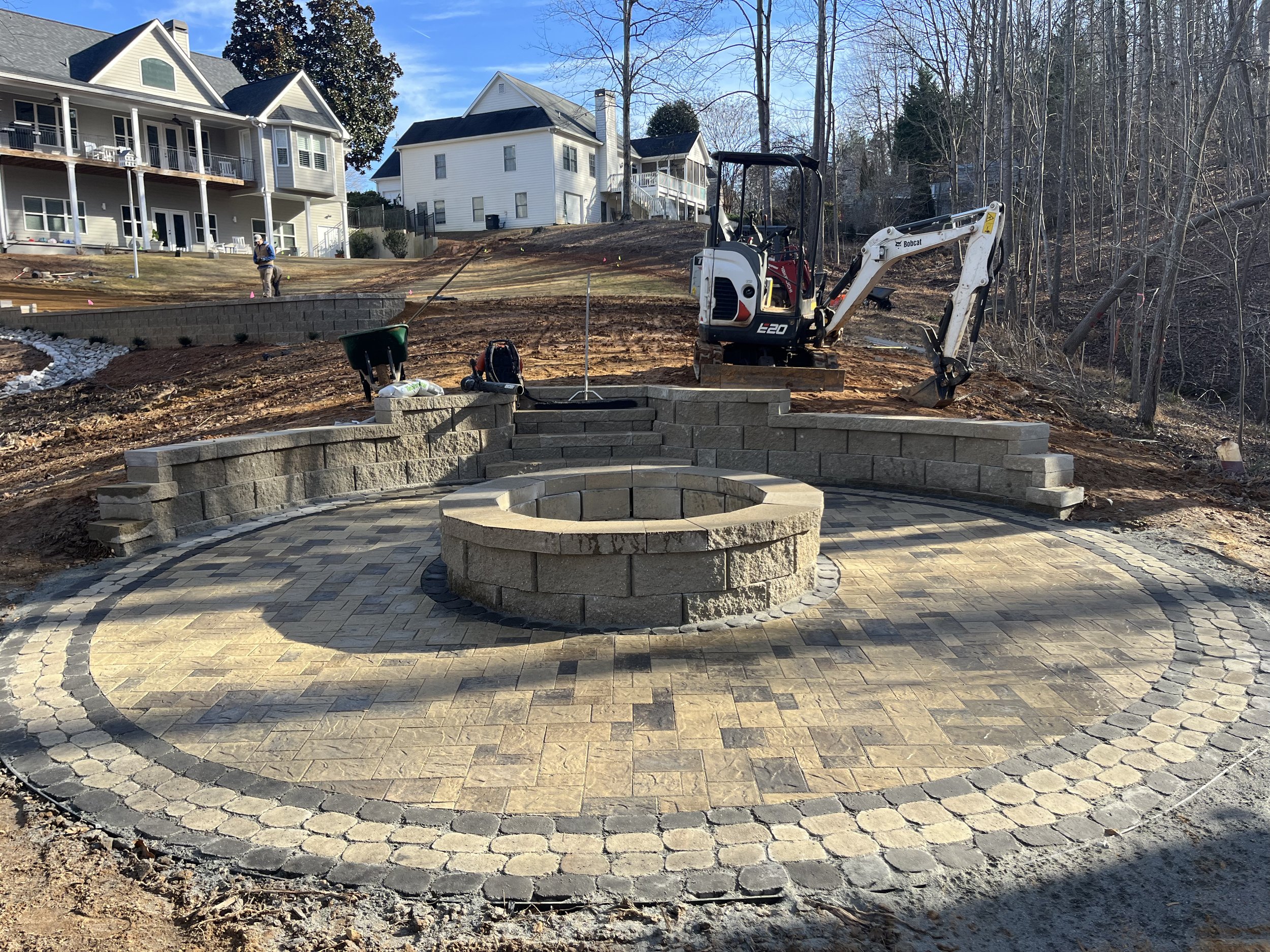
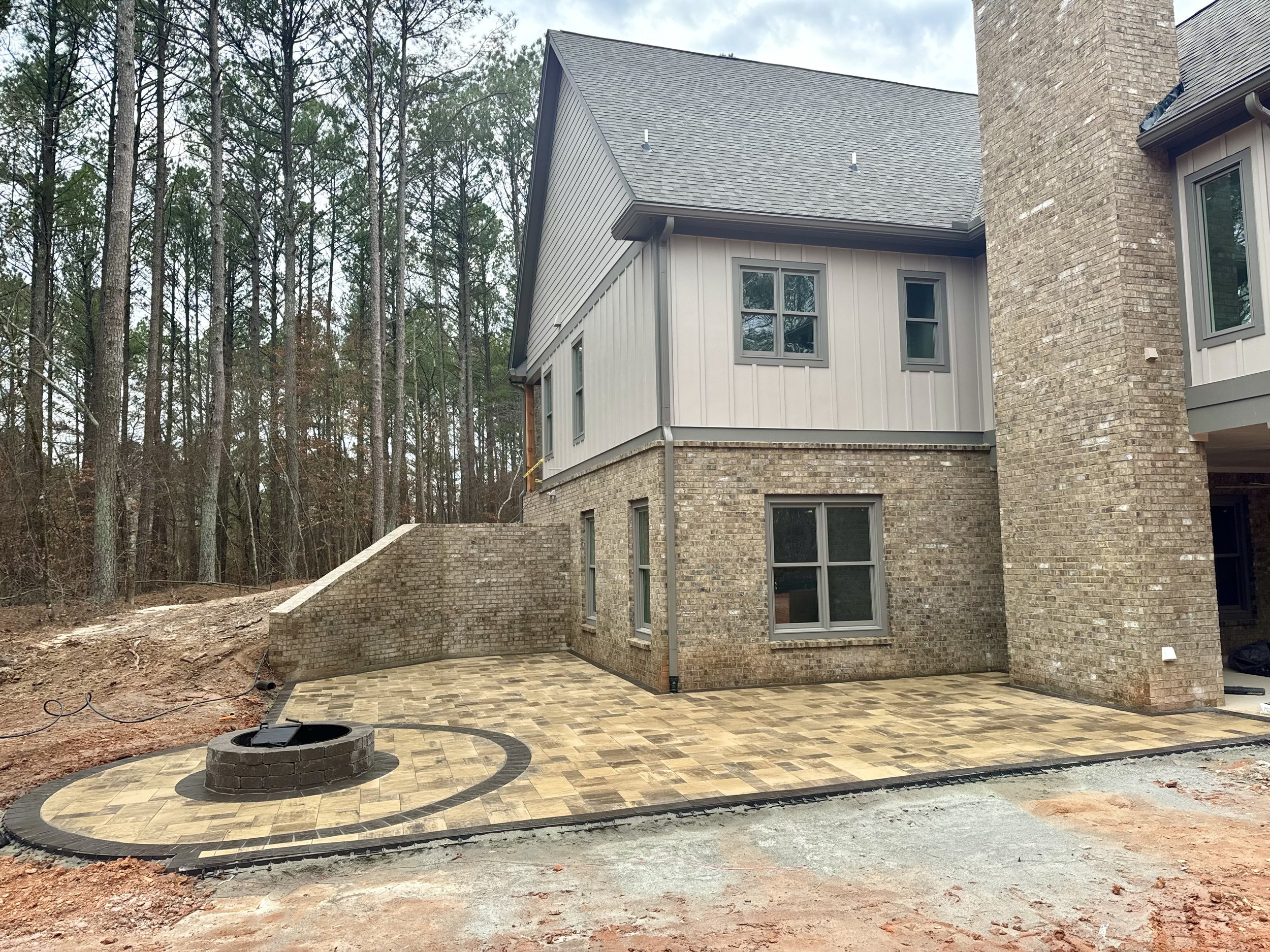

How We Build Our Retaining Walls
Prepare the Site: Preparing the site involves clearing the area of any vegetation, debris, and existing structures. This step includes marking the layout and dimensions of the retaining wall and conducting soil tests to determine the appropriate design approach. For a stable retaining wall, contractors need to prepare the site properly.
Install the Base: The base installation is critical in building a retaining wall. A trench is excavated to the required depth and filled with a layer of compacted gravel or crushed stone. This base provides a stable foundation, distributing the wall's weight and preventing shifting or settling over time.
Lay the First Course: Laying the first course involves placing the initial row of materials on the prepared base, such as blocks, stones, or concrete. Each piece is carefully aligned and leveled to create a solid and even starting point. This step is crucial for the stability and accuracy of the entire wall structure.
Install Drainage: An appropriate drainage system prevents water build-up behind the retaining wall. This step includes placing perforated pipes, gravel layers, and filter fabric to facilitate water flow away from the wall. Effective drainage solutions help manage water pressure and protect the wall from potential damage.
Final Checks: The final checks involve inspecting the retaining wall for alignment, stability, and quality. Any adjustments are made to ensure the wall meets design specifications and functions as intended. This step also includes adding finishing touches, such as capstones and landscaping, to enhance the wall's appearance and integration into the surrounding environment.
Our Service Area in Georgia
Gainesville, Cornelia, Clarksville, Cleveland, Lula, Jefferson, Dawsonville, Dahlonega, Buford, Suwanee, Cumming, Duluth, Alpharetta, Commerce
Schedule a Free Consultation
Connect with our Rooted Landscape Management team to start the journey toward a robust and visually appealing retaining wall. Our experts provide professional advice and customized solutions for any project. We create outdoor spaces that combine functionality and beauty, offering long-lasting results.

